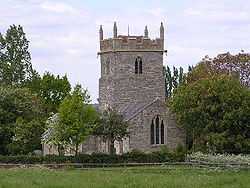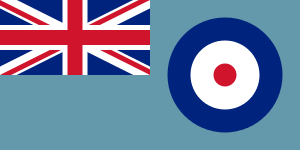Throckmorton, Worcestershire
| Throckmorton | |
 Throckmorton Church |
|
 Throckmorton |
|
| Population | 200 (2001 census) |
|---|---|
| OS grid reference | SO980496 |
| Civil parish | Throckmorton |
| District | Wychavon |
| Shire county | Worcestershire |
| Region | West Midlands |
| Country | England |
| Sovereign state | United Kingdom |
| Post town | PERSHORE |
| Postcode district | WR10 |
| Police | West Mercia |
| Fire | Hereford and Worcester |
| Ambulance | West Midlands |
| EU Parliament | West Midlands |
|
|
Coordinates: 52°08′42″N 2°01′48″W / 52.145128°N 2.030097°W
Throckmorton is a small village and civil parish in the administrative district of Wychavon, in the county of Worcestershire, England.
The village lies 3.5 miles northeast of Pershore, five miles north-west of Evesham and 9 miles southeast of the city of Worcester. At the 2001 census, it had a population of 200.
The church
The village is ancient and the earliest extant remains are parts of the church and bell-tower (now a chapelry), dating from the 13th century. Excavations discovered the stone foundations of an even earlier church on the site. The church has no electricity and is lit by gas-lamps and candles.
QinetiQ Pershore

Formerly RAF Pershore, and also known as Throckmorton Airfield, the site is owned and operated by QinetiQ as a Business Park and Trials Centre.
At the periphery of the village is the military airfield RAF Station Pershore. The station has a long history. Archeological investigations of the airfield have suggested that it was originally a Roman site.[1] The airfield was built in 1940 during the Second World War and was home to No 23 Operational Training Unit equipped with Wellington bombers. Subsequently, the airfield was home to No 1 Ferry Unit, the RAF Pershore Advanced Flying School and the Royal Radar Establishment Flying Unit.
The airfield was used as site for Vulcan bombers. Pershore was one of a number of dispersal sites for the RAF nuclear deterrent V Bombers, none were ever dispersed on anything other than training missions. To a question raised in Parliament, assurance was given that there are no records of radioactive contamination as a result of use of the site for Vulcan bomber disposals as no V bomber ever dispersed with live weapons.[2]
Several plans have been put forward for the development of the site that was used in 2001 as a burial ground for the carcasses of over 100,000 animals afflicted with foot and mouth disease.[3] In 2008 it was suggested that the site be used as a prison camp to relieve overcrowding in Britain's jails.[4] In 2008 proposals were put forward by QinetiQ to use the site for the development of an eco-town for a population of up to 20,000.[5]
Since 2010, the airfield has hosted the Throckmorton Air Show to benefit local charities.[6]
The Throckmorton family
The village gave its name to the Throckmorton family.
In the media
The village has had a number of television and radio documentaries made about it, notably by Channel 4's archaeological television programme Time Team in 2002[7] and BBC Radio 4 in 2006.
Culture and countryside
The surrounding countryside is that celebrated by A.E. Housman and Edward Elgar, and there are numerous heritage sites locally.
References
- ↑ Archeological investigations of the airfield
- ↑ House of Commons minutes: Hansard 21 February 2008 Retrieved 3 August 2009
- ↑ Worcestershire news archives Retrieved 3 August 2009
- ↑ Birmingham Post 2008 Retrieved 3 August 2009
- ↑ Worcestershire news archives Retrieved 3 August 2009
- ↑ "Throckmorton Air Show".
- ↑ http://www.channel4.com/history/timeteam/throckmorton.html
External links
| Wikimedia Commons has media related to Throckmorton, Worcestershire. |
- Village homepage
- Archaeology at Throckmorton
- Throckmorton Parish profile
- www.throckmortonairshow.com Airshow
| ||||||||||||||||||||||||||||||||||||||||||||||
